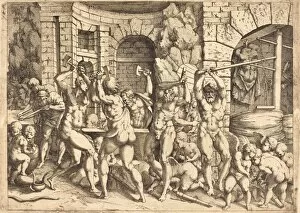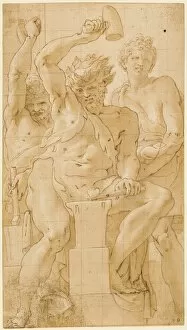Francesco Primaticcio Collection (page 3)
Francesco Primaticcio was an Italian painter, sculptor, and architect who played a significant role in the development of French Mannerism during the 16th century
All Professionally Made to Order for Quick Shipping
Francesco Primaticcio was an Italian painter, sculptor, and architect who played a significant role in the development of French Mannerism during the 16th century. His works showcased his exceptional talent and artistic versatility. One of his notable creations is "The Banquet of Alexander, " painted between 1540-50 by Domenico del Barbiere. This masterpiece depicts a lavish feast attended by Alexander the Great and his courtiers, showcasing Primaticcio's ability to capture grandeur and opulence. In another artwork titled "Classical Female Figure with Two Infants, " created around 1539-42, Primaticcio portrays either Diana or Venus accompanied by two infants. The delicate brushwork and graceful composition highlight his skill in portraying classical mythology. Primaticcio also contributed to "The Muses and the Three Great Goddesses" series with his depiction of Juno. Created between 1540-56 by an anonymous artist, this piece showcases Primaticcio's ability to bring mythological figures to life through intricate details and vibrant colors. Two other muses from this series are Thalia and Melpomene, both created around 1540-45 by anonymous artists but influenced heavily by Primaticcio's style. These artworks demonstrate his mastery in capturing different emotions through facial expressions and body language. Calliope is another muse depicted in one of Primaticcio's works from the same series. Created around 1540-45, it showcases her holding a quill pen as a symbol of inspiration for poets and writers—a testament to Primaticcio's attention to symbolic elements within his compositions. Primaticcio also ventured into depicting historical events like "People Fleeing a Burning City. " Created anonymously during the 16th century, this painting captures chaos amidst destruction while highlighting Primaticcio's ability to convey dramatic scenes convincingly. His expertise extended beyond paintings; he also excelled in sculpture.










